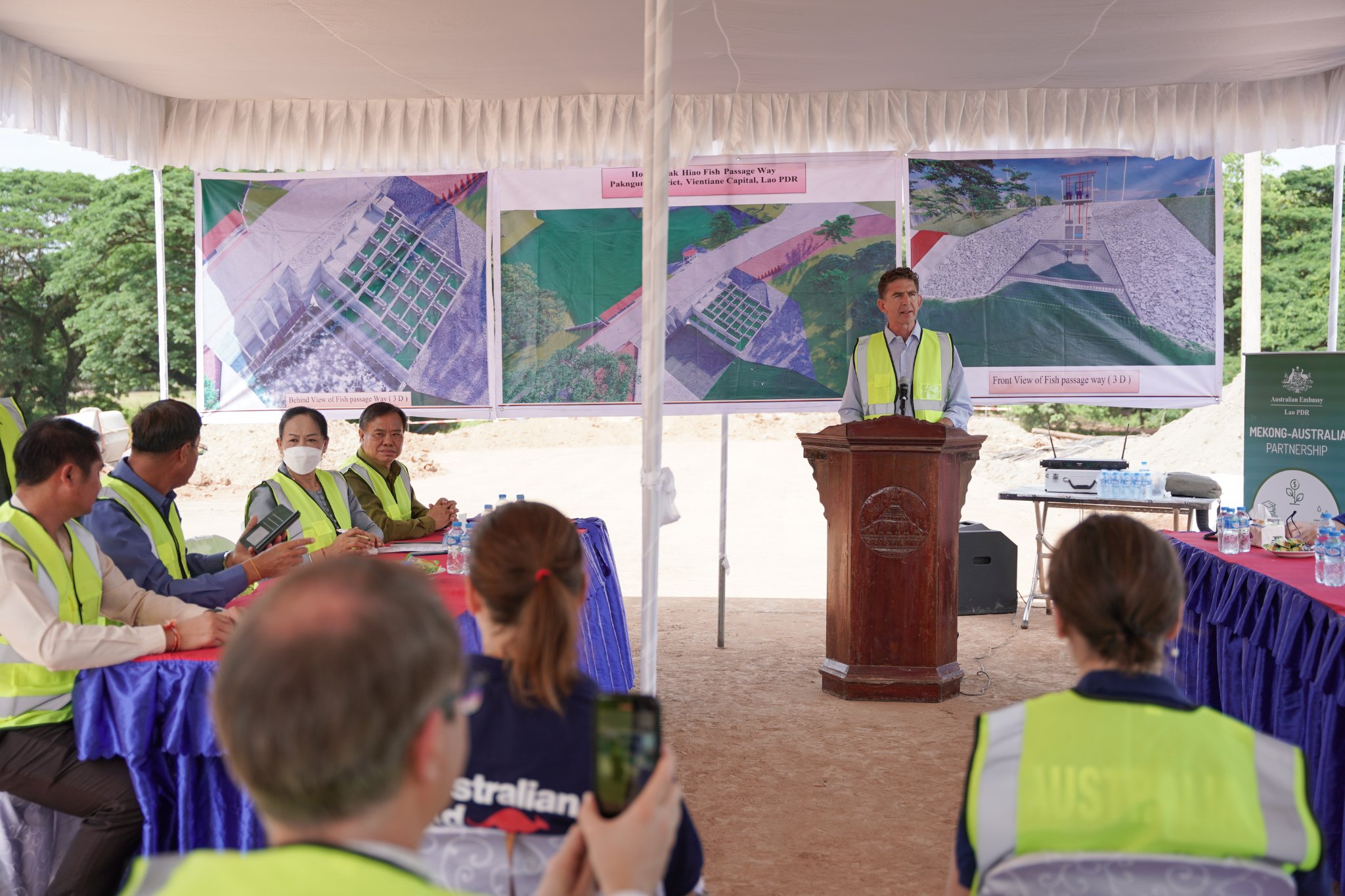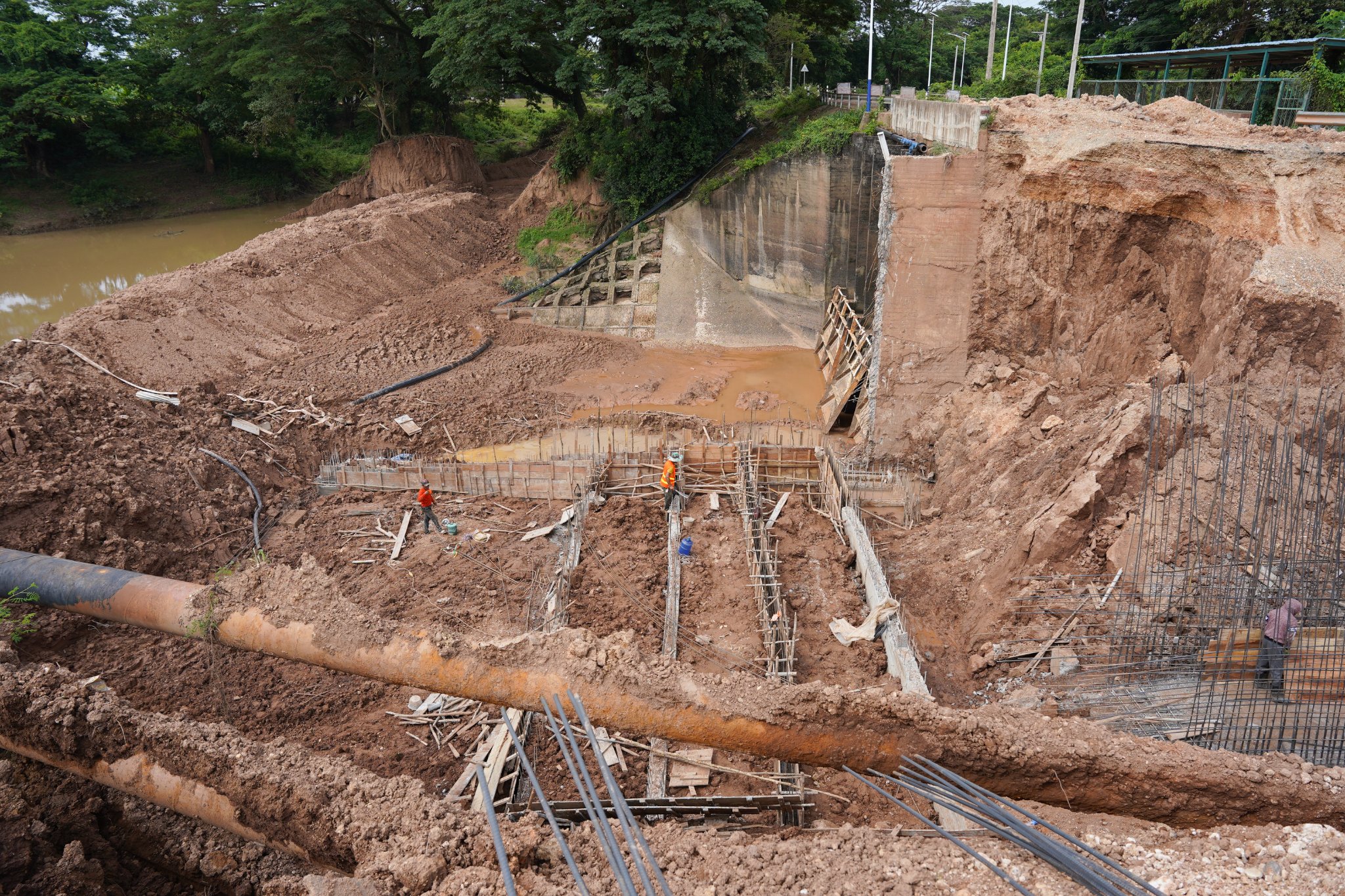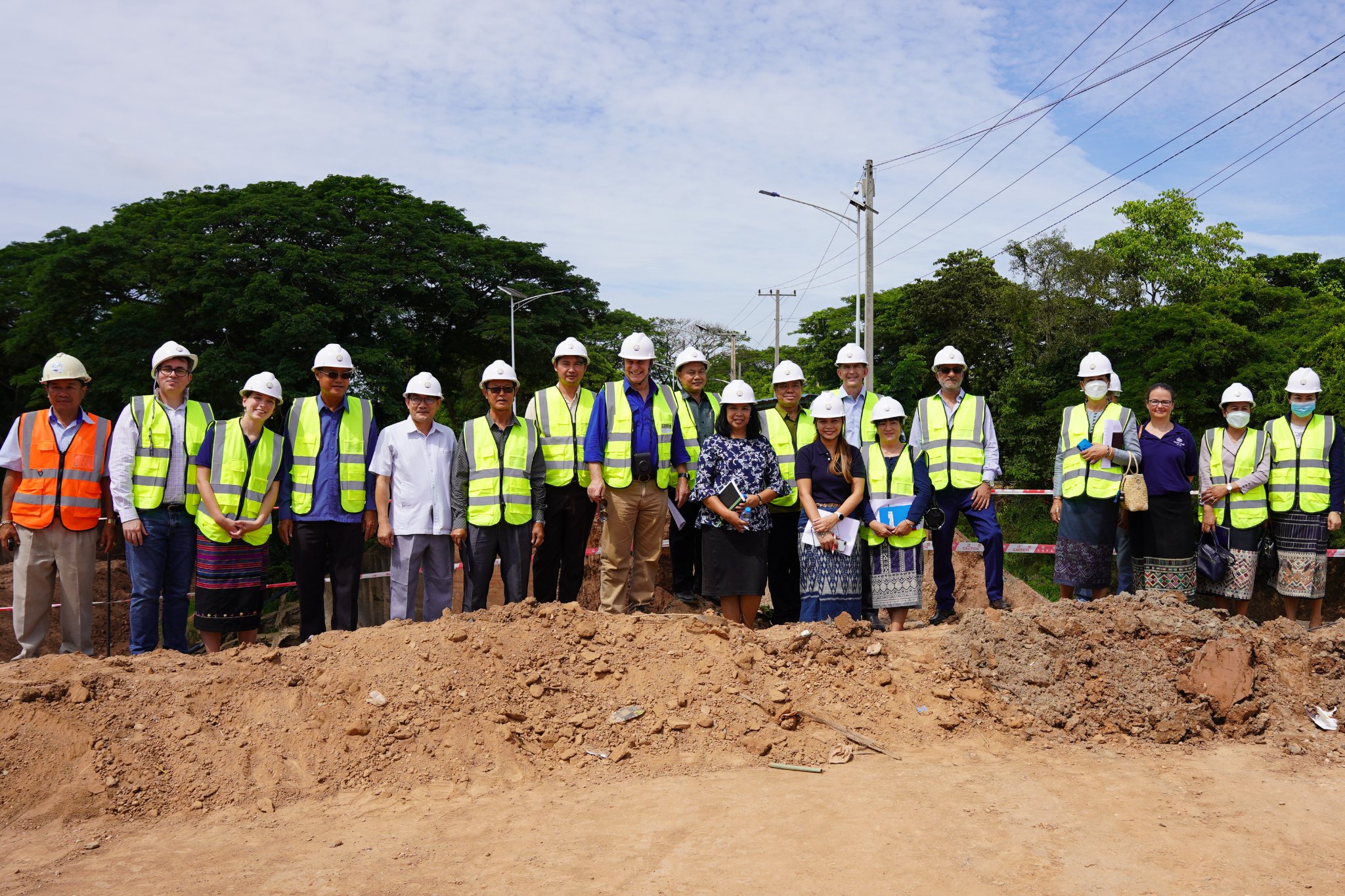Australia to scale-out fish-saving technology in South-East Asia
The Australian Government is investing more in technology to protect fish and boost river health and food security to increase climate resilience across the Mekong region.
Yesterday at an event in Vientiane, the Australian Deputy Ambassador to Lao PDR, Mr Dan Heldon, announced an expansion of our partnership with the Lao government on fish passages in water management structures. These “fish ladders” are constructed around obstacles such as irrigation dams and weirs to allow fish to migrate up and down waterways unrestricted to access feed sources, breeding spots and more.
The Deputy Ambassador said the investment demonstrates Australia’s ongoing commitment to building strong development cooperation with countries in the region through the Mekong-Australia Partnership - Water, Energy, Climate program. This program supports Mekong countries, including the Lao PDR, to strengthen water security, promote clean energy, and respond to climate change.
‘As population and industries grow throughout South-East Asia, there are competing pressures on the region’s rivers and wetlands. Striking balance between economic development while mitigating environmental and social impact remains a challenge. This is particularly important for Laos, as hydropower and irrigation development remain essential elements contributing to the country’s economic development,’ Mr Heldon said.
‘Fish production is vital for food security and many household incomes, so protecting fish species is important for people, the environment and the economy. We are proud to work with partners including the National University of Laos and Ministry of Agriculture and Forestry, to expand this important work.
‘This is a terrific example of how Australia and Lao PDR work together, and have been doing so for 70 years. This year, we celebrate 70 years of unbroken diplomatic relations, which is a remarkable testament of commitment and cooperation.’
ACIAR will manage the DFAT investment under an initiative called ‘FishTech: Integrating technical fisheries solutions into river development programs across Southeast Asia’, led by Professor Lee Baumgartner of Australia’s Charles Sturt University.
ACIAR CEO, Professor Andrew Campbell, welcomed the Australian Government’s leadership and commitment to fisheries research and development in Southeast Asia.
‘Fish provide 60% of all protein consumed by humans in the Mekong Basin. Typically, Mekong fish species migrate upstream to breed and back down again to complete their life cycles. Structures like irrigation weirs or hydroelectric dams that block fish migration upstream or downstream, ultimately threaten the food security of the region.
'This investment is a clear example of the Australian Government, through DFAT and ACIAR, working collaboratively with country partners to deliver innovative new technology to protect native fish and boost river health across the Mekong Basin,’ Prof Campbell said.
‘Previous research funded by ACIAR has proven that well-designed fish passages mitigate the impact of irrigation development on fish migration, with lasting economic and social benefits for river-dependent communities.’
The FishTech activity provides an opportunity to expand on the existing partnership between ACIAR and its research partners, including the National University of Laos (NUOL), to enhance food security and increase climate resilience in the Mekong region.
‘This expanded activity will support more demonstration sites and extension activities, build capacity with local researchers and extension officers, and accelerate the adoption of fish passage technologies in governance and policy frameworks.'
‘Ultimately, the FishTech investment will allow ACIAR and its partners to upscale and scale-out fish passage implementation efforts.’
FishTech in Lao PDR will be led by NUOL with the guidance of its president, Dr Oudom Phonekhampheng.
Dr Phonekhampheng has been involved with fish passage projects since 2005. He said today’s announcement reinforced the importance of working with local partners and the community to research and build fish passages.
‘The National University of Laos is proud to be involved. Through our involvement with fish passage projects, we have developed knowledge and skills among our researchers.
‘Under the new FishTech initiative, we will continue to lead activities that engage local communities because they benefit from the fish passages and have also played a vital role in the success of the proof-of-concept projects.’
Through the Mekong Australia Partnership, Australia will provide additional assistance of A$5 million over three years (2022-2025) under the FishTech initiative. Most activities will be implemented in the Lao PDR and Cambodia, with Vietnam and Thailand participating in training activities.





